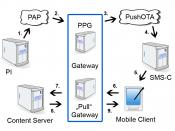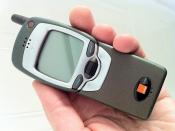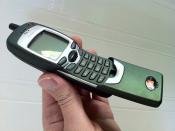Introduction
Upon the advent of the mobile data marketplace came many limitations with minimal capabilities of handheld devices and wireless networks. In order to realize the vision of providing the same information services available via Internet on wireless terminals such as digital mobile phones, new standards had to be set that could control its dynamics into a suitable format. Ericsson, Motorola, Nokia, and Unwired Planet initiated the WAP forum in 1997 in a collaborated effort to meet these demands. "Wireless application protocol (WAP) is an application environment and set of communication protocols for wireless devices designed to enable manufacturer-, vendor-, and technology-independent access to the Internet and advanced telephony services" (www.iec.org). In this paper we will examine an overview of what WAP is and the basics of how it works, the benefits it offers, and future expectations.
Why choose WAP?
"WAP bridges the gap between the mobile world and the Internet as well as corporate intranets and offers the ability to deliver an unlimited range of mobile value-added services to subscribers-independent of their network, bearer, and terminal" (www.iec.com).
This service allows mobile subscribers access to the same abundance of information resources from a pocket-sized device such as a palm pilot or mobile phone as they can from their desktop. The specifications of WAP define the application, session, transaction, security, and transport layers protocols to enable operators, manufacturers, and applications providers to meet the challenges created by the differences of advanced wireless services and fast, flexible service creation. A request from a mobile device is sent as a URL through the operator's network to the WAP gateway, which is the interface between the operator's network and the Internet.
To fit data into the small wireless terminals, WAP uses a Micro Browser, a small piece of software that makes minimal demands on...


